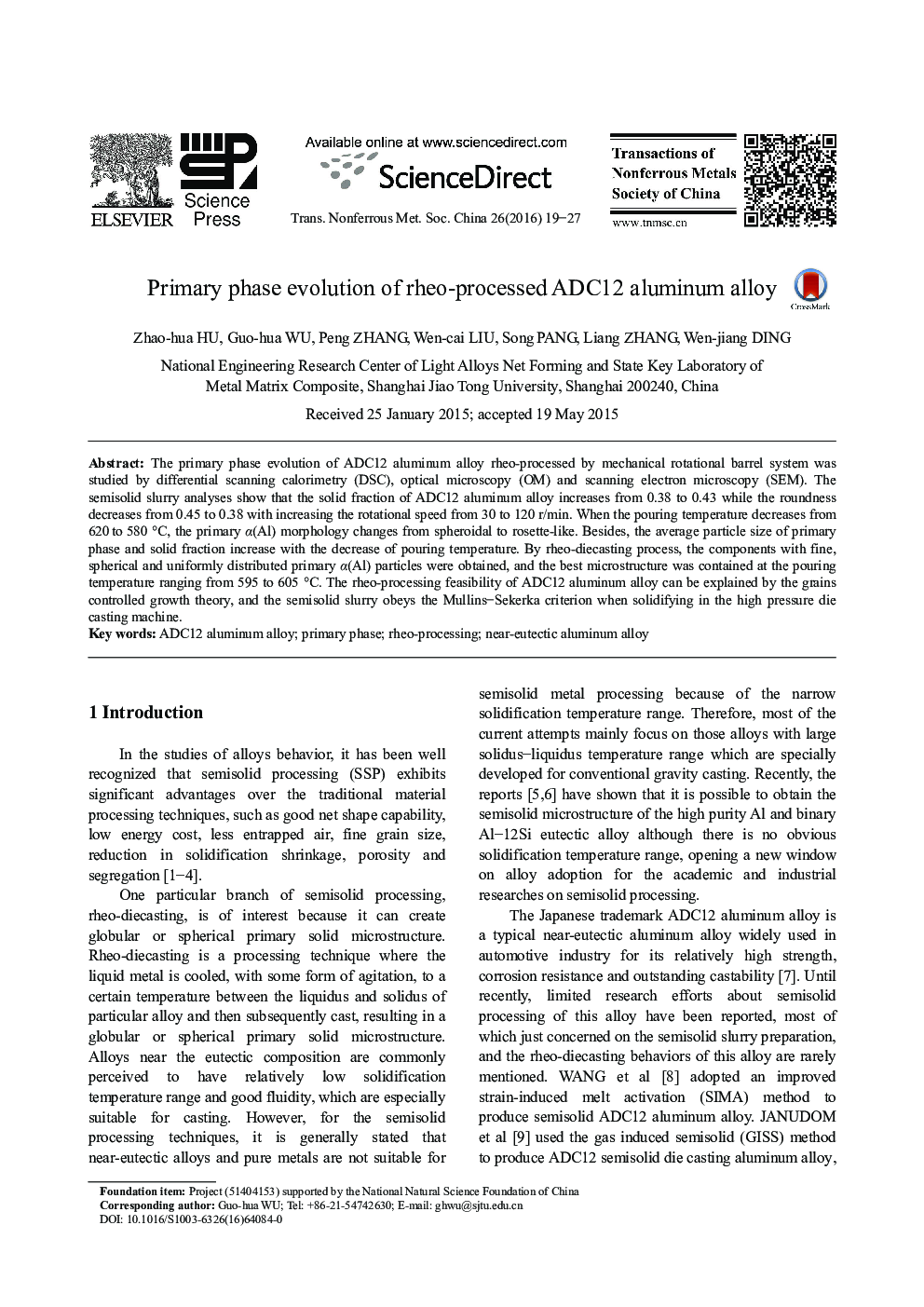| Article ID | Journal | Published Year | Pages | File Type |
|---|---|---|---|---|
| 1636252 | Transactions of Nonferrous Metals Society of China | 2016 | 9 Pages |
Abstract
The primary phase evolution of ADC12 aluminum alloy rheo-processed by mechanical rotational barrel system was studied by differential scanning calorimetry (DSC), optical microscopy (OM) and scanning electron microscopy (SEM). The semisolid slurry analyses show that the solid fraction of ADC12 aluminum alloy increases from 0.38 to 0.43 while the roundness decreases from 0.45 to 0.38 with increasing the rotational speed from 30 to 120 r/min. When the pouring temperature decreases from 620 to 580 °C, the primary α(Al) morphology changes from spheroidal to rosette-like. Besides, the average particle size of primary phase and solid fraction increase with the decrease of pouring temperature. By rheo-diecasting process, the components with fine, spherical and uniformly distributed primary α(Al) particles were obtained, and the best microstructure was contained at the pouring temperature ranging from 595 to 605 °C. The rheo-processing feasibility of ADC12 aluminum alloy can be explained by the grains controlled growth theory, and the semisolid slurry obeys the Mullins-Sekerka criterion when solidifying in the high pressure die casting machine.
Keywords
Related Topics
Physical Sciences and Engineering
Materials Science
Metals and Alloys
Authors
Zhao-hua HU, Guo-hua WU, Peng ZHANG, Wen-cai LIU, Song PANG, Liang ZHANG, Wen-jiang DING,
